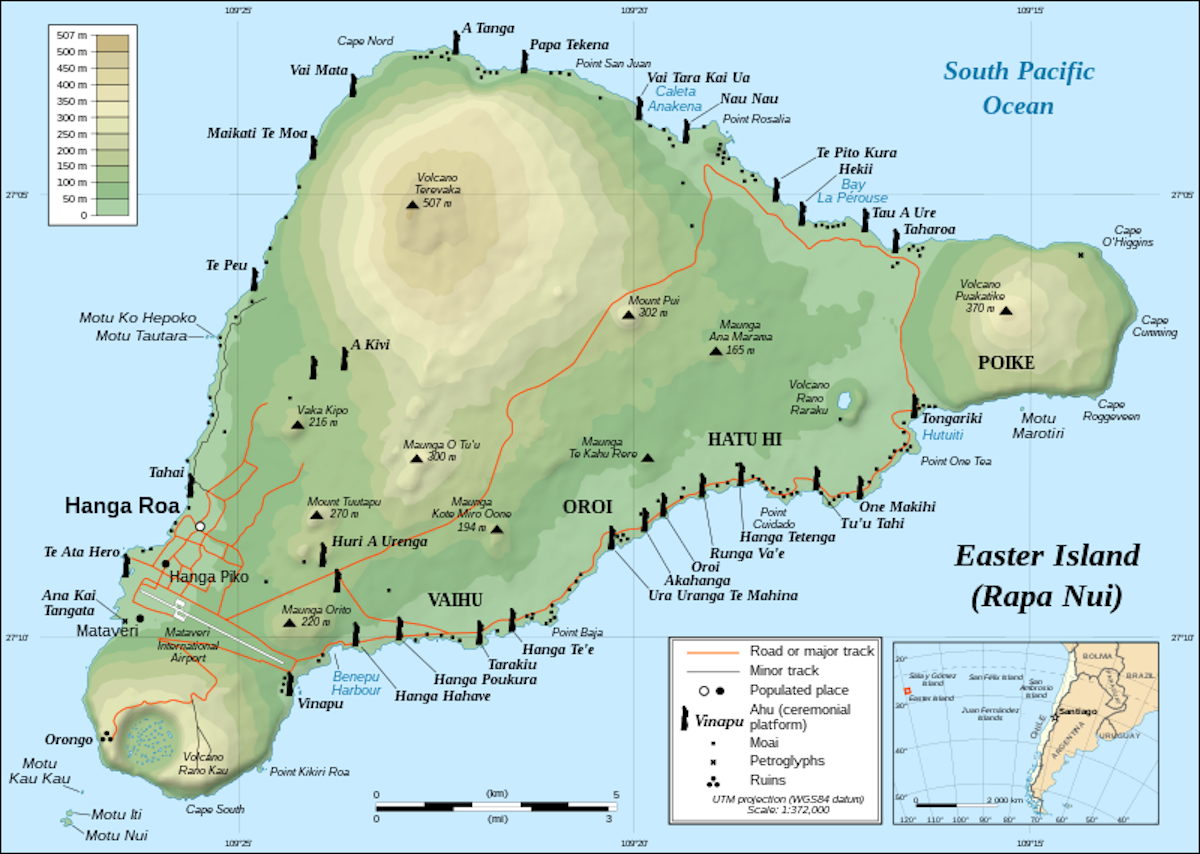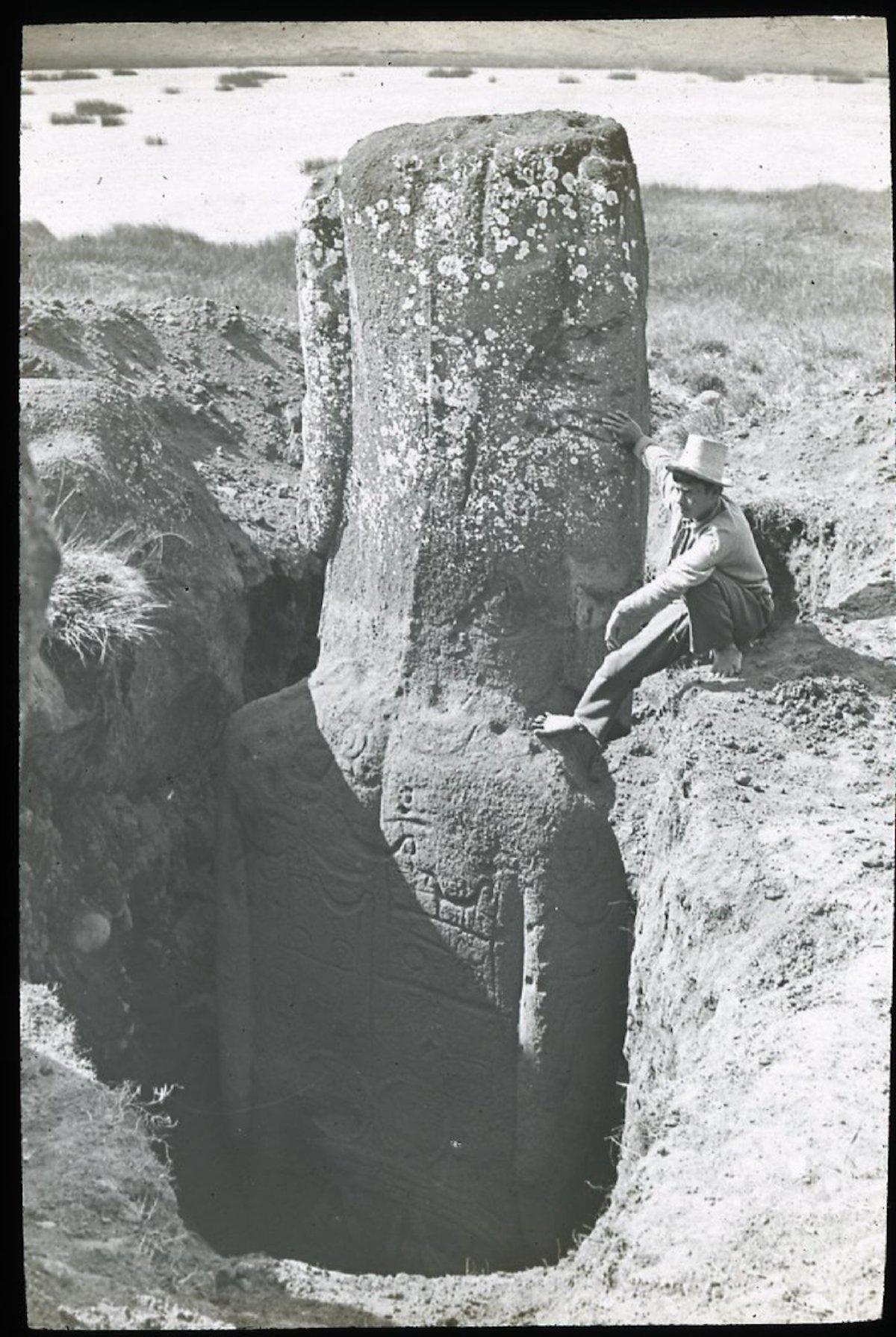But what are the moai, and why are these statues so important?
The moai are monolithic statues that depict a whole body. They are known for their rectangular-shaped heads, long noses, strong chins, and slits for eyes. But, they are often referred to as Easter Island heads because of the disproportionate size of their heads, and the fact that many were buried up to their shoulders.
The statues were carved by the Polynesian Rapa Nui people, over a thousand years ago between the years 1250 and 1500 AD. There are about one thousand moai statues known thus far. The moai are made out of volcanic tuff or solidified ash. A volcanic crater supplied much of the stone used to make the statues
The average moai statue is about thirteen feet tall, and the tallest found was over thirty feet tall. Many archeologists believe that the figures were representations of ancient Polynesian ancestors, as part of a Polynesian tradition of honoring your ancestors. The bigger the statue, the higher the status of the individual. And, the more expensive and laborious the process would be. They also functioned as religious and political symbols of authority, and as repositories of sacred spirit. This was not unusual in ancient Polynesian religion, as carved stone and wooden objects were typically thought to be charged by a magical spiritual essence called “mana.”




























